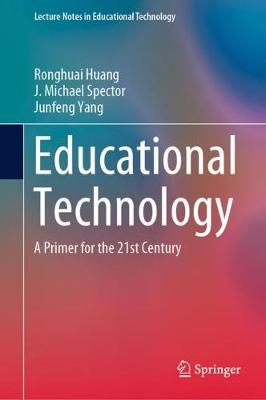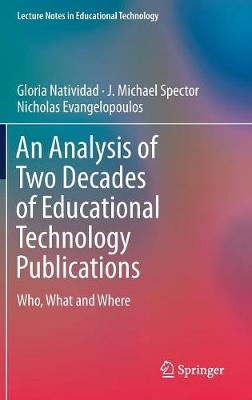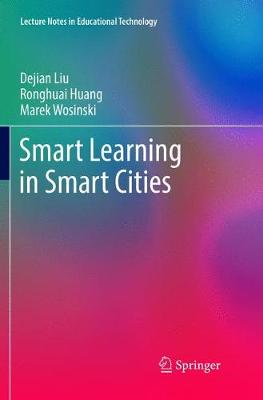Lecture Notes in Educational Technology
3 total works
Educational Technology
by Ronghuai Huang, J. Michael Spector, and Junfeng Yang
The demand of educational technology has been rising steadily, primarily due to the fact that e-learning is a huge and significantly expanding world-wide industry. Commercial e-learning companies, training departments in large companies and organizations, computer software companies and educational institutions the world over employ large numbers of educational technology specialists. There is a strong demand for technologists who understand educational theories and for instructional designers and teachers who understand technologies.
This book is targeted towards those who are looking for career in educational technology, instructional design, or media and information systems, or may want to continue their studies in graduate programs in learning and instructional technology, and those who are interested in becoming teacher in K-12 setting but need background in educational technology. This book will also act as a valuable resource in teacher education programs where primary focus on mainstream education and requires an authentic resource in instructional design and educational technology. Keeping in mind the varied needs of the organizations, employees and potential students, this book adopts a competency approach to learning and assessment. The themes and topics take a multi-disciplinary approach, and are aimed at preparing students for competent and innovative educational technology professionals.
An Analysis of Two Decades of Educational Technology Publications
by Gloria Natividad, J. Michael Spector, and Nicholas Evangelopoulos
It captures the trends in a number of research streams within the discipline of educational technology and identifies the point in time when a massive change took place. This is a significant achievement given that, in epistemology and philosophy of science, there have always been discussions of paradigm shifts, but researchers have always identified them qualitatively. This is the first work to identify a paradigm shift using rigorous quantitative methods.
The analysis procedure involved big data and sophisticated analysis, which supported the identification of clusters at several breakpoints from which the richest set was selected in order to provide the most detailed analysis. This comprehensive analysis also shows what has been published and by whom in those ten top-tier journals. This work makes a highly significant contribution to the field of learning technologies and provides the groundwork and a significant data source for other scholars, both new and experienced, to build on and expand in their work.
Smart Learning in Smart Cities
by Dejian Liu, Ronghuai Huang, and Marek Wosinski
This book introduces readers to the current status of smart learning in China by providing extensive and accurate data from different contexts of smart learning. In particular, it investigates smart learning in smart cities, which extends the concept of smart learning to cover both formal and informal learning, and to support life-long learning.
With digital technologies and the Internet becoming increasingly integrated into learning, the demand for smart learning has grown steadily, especially in smart city scenarios. As the need for life-long learning is on the rise, smart learning environments in cities should be equipped to meet people's demands. Smart learning/education is also one of the key applications of smart cities.
Though the book's content mainly focuses on the educational technology field, research in cities and industries is also included. This book offers a valuable resource for graduate students in educational technology, smart learning environment and smart city researchers, cooperative university managers, and all others who are interested in smart learning industries.


